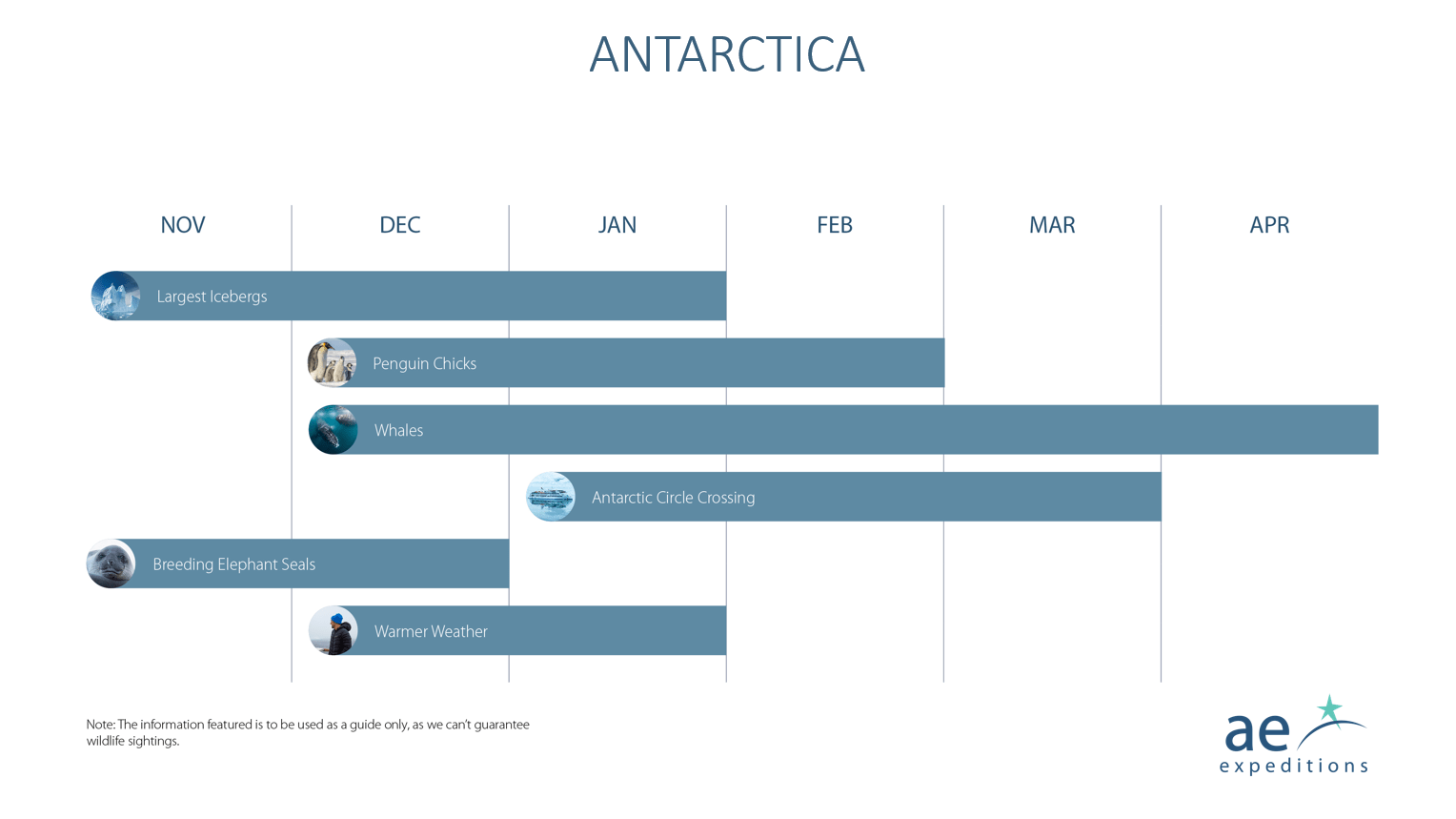
With its cold climate and harsh conditions, Antarctica has given rise to some fascinating and awe-inspiring wildlife. Travelling on an expedition cruise in the Antarctica , you’ll get the chance to view animals in the Antarctic up close and personal, whether it’s from the main ship or from one of the Zodiac boats. With onboard Antarctic wildlife experts and frequent excursions, the trips to this part of the world put an emphasis on learning all about the creatures that inhabit this incredible region.
Penguins
Adorable, engaging and incredibly resilient, penguins are some of the most fascinating bird species on the planet. Found only in the Southern Hemisphere, there are 18 species of penguin which live on the subantarctic islands as well as in Antarctica, New Zealand, South Africa and even the Galápagos Islands. While all Antarctic penguins have flightlessness and waddling in common, species differ substantially in terms of behaviour and appearance.
One of the largest species of penguin in the subantarctic islands, the King penguin can be identified by its distinctive bright orange markings on either side of its head and the top of its breast. King penguins are excellent divers; the longest recorded dive for this species is 343 metres!
The Chinstrap penguin meanwhile gets its name from its distinctive black marking across its white neck. Interestingly, Chinstrap penguins differ from other species in that the males and females don’t vary in appearance.
The Macaroni penguins are likely the most abundant penguin in the world in terms of numbers and are distributed throughout the Sub-Antarctic islands as well as the Antarctic Peninsula. They are characterised by the bright yellow feathers jutting from their heads as well as their noisy nature.
Simple black and white and extremely cute, sneaky Adélie penguins have been known to steal pebbles from each other’s nests to line their own.
You might have guessed it from their name, but the subantarctic Rockhopper penguins generally prefer rocky territory for their habitats. With black and yellow head feathers and red eyes, they’re a very distinctive penguin species.
Last but not least, Gentoo penguins are the third largest penguins on the Antarctic continent and are known to be especially nurturing parents.
Seals
One of the few mammals among wild animals in the Antarctic, there are six different species of seals that live on the continent. Found north of the pack-ice zone, Elephant seals breed on the beaches in dense colonies of bulls (males) and harems (groups of females). Male bulls can weigh up to 4000 kilograms!
Leopard, Crabeater and Weddell seals all breed on the Antarctic ice. While all seals are carnivorous, the solitary Leopard seal is a particularly ferocious hunter who will eat penguins and even other seals.
Weddell seals spend the majority of their time below the Antarctic ice where they hunt fish and avoid orcas and leopard seals.
Whales
Humpback Whales | Antarctica
The most exciting Antarctic wild animal sightings you’ll experience during your Aurora voyage will be the area’s mighty and magnificent whales.
Likely the biggest whale you’ll see on your trip to Antarctica, the Humpback whale is famous for the huge distances it travels, its beautiful songs and its exciting behavioural displays. Humpback whales usually grow to around 15 metres, making their tendency for breaching and tail slapping all the more exciting.
The smaller Antarctic Minke whale was only distinguished from other Minke whales as its own species in the 1990s. Measuring around 9 metres in length, the Antarctic Minke Whale is well-adapted to the icy conditions of Antarctica and breathes in heavy ice by sticking its long nose through narrow cracks.
Unlike the Minke and Humpback whales, Orca, also known as killer whales, have teeth instead of baleen filter systems and are actually a member of the dolphin family. These highly intelligent black and white predators work in pods and use a variety of strategies to hunt their prey, including creating giant waves to wash seals off the ice and into the water where they can be snatched up.
Seabirds
Penguins aren’t the only group of birds in Antarctica and the subantarctic continent; the region is also home to a variety of incredible seabird species, especially during spring, when over 100 million of them come to the region’s rocky shores and islands to breed.
One of the most impressive and majestic of these seabirds is the albatross, which glides through the air with a wingspan of up to 3.4 metres.
The attractive chocolate and white Antarctic petrel is known to be a very sociable creature, flying alongside ships and even accompanying whales.
Distinguished by its white body, forked tail, black cap and red-orange beak, the Antarctic tern stays close to its breeding islands all year long.
Finally, the skua, of which there are two species in Antarctica, is one of the major avian predators on the continent and is fiercely territorial. The skua is even known to prey on other bird species and penguin eggs.



